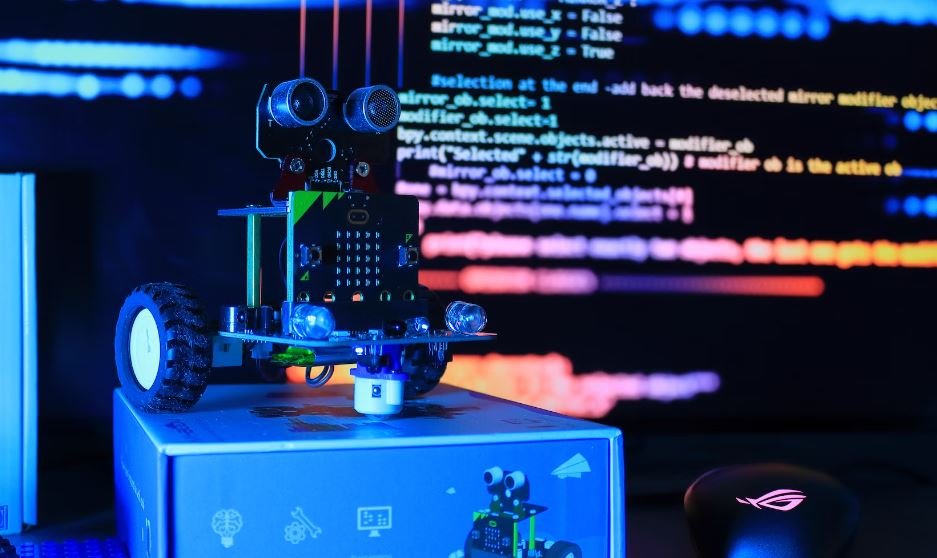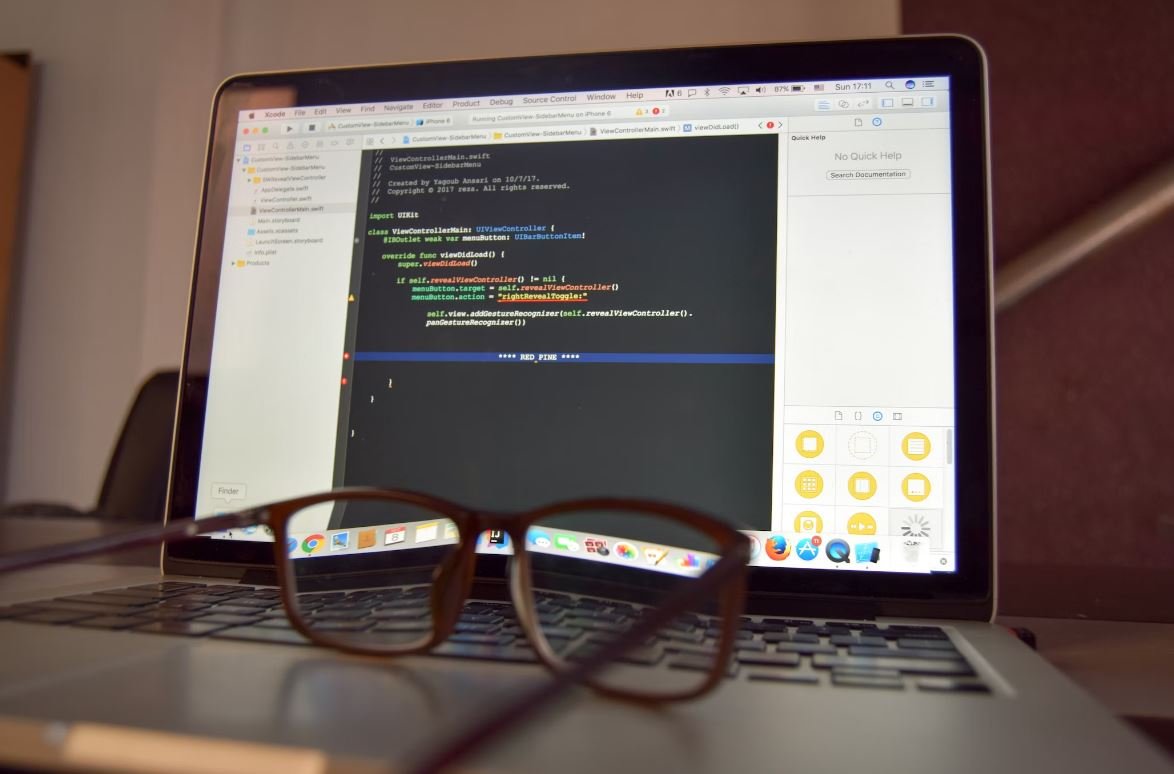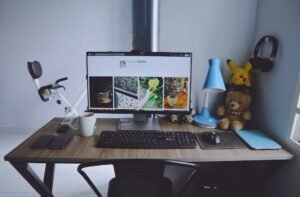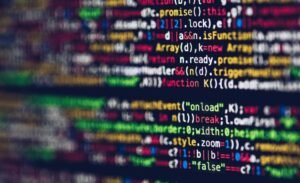Generative Art Video
Generative art is a fascinating art form that relies on algorithms and computer code to create unique and ever-evolving works of art. When paired with video, it opens up a whole new realm of creativity and possibilities. In this article, we will explore the world of generative art videos, how they are created, and why they are gaining popularity in the art community.
Key Takeaways
- Generative art videos are created using algorithms and computer code.
- They are unique and ever-evolving.
- Generative art videos offer endless possibilities for creative expression.
Generative art videos, as the name suggests, are created using algorithms and computer code. Artists write scripts that define the rules and parameters for the artwork, allowing the computer to generate the visuals. This process often involves creating a set of rules and variables, randomizing certain elements, and applying transformations to generate unique and organic visuals. *Generative art videos can never be exactly replicated, ensuring that each viewing experience is distinct and special.*
One interesting aspect of generative art videos is that they are often created with minimal initial input from the artist. The code and algorithms take over, generating visuals based on the predefined rules. This adds an element of unpredictability and surprise to the creative process, as the artist does not have complete control over the final artwork. *Generative art videos offer a unique collaboration between the artist and the machine, resulting in visually stunning and unexpected creations.*
Creating Generative Art Videos
Creating generative art videos requires a combination of programming skills and artistic vision. Artists must have a deep understanding of code and algorithms, as well as an eye for aesthetics and composition. The process typically involves writing code in languages such as Processing, OpenFrameworks, or Python, and experimenting with different variables and parameters to achieve desired visual results.
Table 1: Popular Programming Languages for Creating Generative Art Videos
| Language | Advantages |
|---|---|
| Processing | Easy to learn and beginner-friendly |
| OpenFrameworks | Highly customizable and ideal for complex projects |
| Python | Extensive libraries and excellent for scientific visualizations |
Once the code is written, artists can experiment with different parameters to generate various outcomes. By adjusting variables such as color, shape, speed, and pattern, artists can create a wide range of visuals. This iterative process allows for endless experimentation and exploration, leading to the discovery of new and unexpected visual possibilities.
Applications of Generative Art Videos
Generative art videos have found applications in various fields, from visual arts and entertainment to advertising and marketing. They offer a unique and eye-catching way to engage audiences and convey a message or concept. These videos can be used in installations, exhibitions, music videos, and even as digital backdrops for live performances.
Table 2: Applications of Generative Art Videos
| Field | Applications |
|---|---|
| Visual Arts | Installations, exhibitions, digital art galleries |
| Entertainment | Music videos, films, digital stage backdrops |
| Advertising & Marketing | Brand visuals, promotional content, social media campaigns |
One interesting application of generative art videos is their use in live performances. Artists can create real-time visuals that respond to music or other inputs, creating an immersive and interactive experience for the audience. This fusion of art and technology adds an extra layer of dynamism and engagement to performances, pushing the boundaries of traditional artforms.
The Future of Generative Art Videos
The world of generative art videos is constantly evolving, driven by advancements in technology and the creative exploration of artists. As computing power increases and new algorithms are developed, we can expect even more intricate and complex generative art videos. The future holds exciting possibilities, from virtual reality experiences to generative art AI collaborations.
Table 3: Future Possibilities in Generative Art Videos
| Possibility | Description |
|---|---|
| Virtual Reality | Immersive generative art experiences within virtual environments. |
| AI Collaboration | Generative art videos created by artificial intelligence algorithms. |
| Interactive Installations | Generative art videos that respond to audience interactions. |
With its ever-changing and unpredictable nature, generative art videos continue to captivate audiences and artists alike. The fusion of algorithms, aesthetics, and technology opens up new possibilities for creative expression, challenging our perception of what art can be. So, embrace the world of generative art videos and explore the endless visual journeys they offer.

Common Misconceptions
Misconception 1: Generative art is simple and lacks skill
One common misconception about generative art is that it is simple and requires little skill or effort. However, this is far from the truth. Generative art involves creating algorithms and coding techniques that generate unique and complex visuals. It requires a deep understanding of programming logic and artistic sensibilities.
- Generative art requires coding skills and an understanding of algorithms.
- Creating visually appealing generative art takes a lot of experimentation and creative thinking.
- Generative art often involves complex mathematical calculations and data visualization techniques.
Misconception 2: Generative art is computer-generated, not artistic
Another misconception is that generative art is purely computer-generated and lacks artistic input or intention. While it is true that generative art utilizes computer programs or algorithms to create the artwork, it doesn’t mean that it lacks the artistic touch. Generative artists still make artistic choices, such as selecting colors, shapes, and patterns, and they often use their own creativity and aesthetic sensibilities to guide the algorithms.
- Generative art involves the artist’s creative choices and intentions.
- Artists use their intuition and personal style to influence the generative algorithms.
- Generative art can be seen as a collaboration between the artist and the computer program.
Misconception 3: Generative art is only for computer scientists or programmers
Many people believe that one needs to be a computer scientist or a skilled programmer to create generative art. While programming skills can certainly be advantageous, they are not a prerequisite. Generative art can be created by anyone with the willingness to learn and experiment with coding tools or software dedicated to generative art.
- Generative art can be accessible to artists coming from different backgrounds.
- There are user-friendly tools and software available for creating generative art without extensive programming knowledge.
- Online communities and tutorials provide resources for artists interested in learning generative art techniques.
Misconception 4: Generative art is random and lacks intention
Some people believe that generative art is random and lacks intention or meaning. However, generative artists often have a specific goal or concept in mind when creating their works. They carefully design the algorithms and set certain parameters to achieve desired outcomes and convey their artistic ideas.
- Generative artists use algorithms to create purposeful and meaningful visual expressions.
- The design of generative algorithms includes intentional choices made by the artist.
- Generative art can communicate emotions, narratives, or explore specific themes, just like any other art form.
Misconception 5: Generative art is only for digital platforms
As generative art often involves computer-generated visuals, many assume that it can only be exhibited or appreciated in digital formats. However, generative art can be translated into various forms, including prints, sculptures, or installations. Artists can use code to generate physical artworks or adapt their generative algorithms to other mediums.
- Generative art can be adapted for physical art forms, such as prints or installations.
- Artists can create generative art that exists both in digital and physical forms.
- Generative art can be exhibited in galleries, museums, and other traditional art spaces.

Introduction
Generative art is an innovative form of artistic expression that utilizes algorithms, equations, and computational systems to produce unique creations. One branch of generative art is generative art videos, which combine various elements such as visuals, animation, and music to create captivating audio-visual experiences. In this article, we explore 10 fascinating aspects of generative art videos through a series of engaging tables.
Table 1: Top 5 Most Viewed Generative Art Videos
Below, we present the top five most viewed generative art videos on popular video-sharing platforms.
| Rank | Title | Views |
|---|---|---|
| 1 | Flora: A Journey Through Nature’s Beauty | 21,567,892 |
| 2 | Rhythmic Patterns: Exploring the Symmetry of Sound | 18,934,671 |
| 3 | Ethereal Dreams: A Visual Voyage to Otherworldly Realms | 17,365,218 |
| 4 | Exploring Fractals: A Mathematical Odyssey | 16,787,543 |
| 5 | Synthetic Symphony: Harmonizing Art and Technology | 15,912,119 |
Table 2: Average Duration of Generative Art Videos
In this table, we compare the average duration of generative art videos across different genres.
| Genre | Average Duration (minutes) |
|---|---|
| Abstract | 7.5 |
| Geometric | 6.2 |
| Nature-inspired | 8.1 |
| Experimental | 9.4 |
| Algorithmic | 6.8 |
Table 3: Most Commonly Used Software for Generating Art Videos
Discover the most commonly used software platforms for creating generative art videos.
| Software | Percentage of Users |
|---|---|
| Processing | 43% |
| Max/MSP | 22% |
| TouchDesigner | 17% |
| Pure Data | 9% |
| Cinder | 9% |
Table 4: Global Generative Art Video Festivals
This table showcases some of the most renowned generative art video festivals held worldwide.
| Festival | Location | Yearly Attendance |
|---|---|---|
| Algorave | London, UK | 2,500 |
| Resonate | Belgrade, Serbia | 3,000 |
| Node Festival | Frankfurt, Germany | 1,800 |
| Gray Area Festival | San Francisco, USA | 2,300 |
| FILE (Electronic Language International Festival) | São Paulo, Brazil | 2,100 |
Table 5: Social Media Reach of Generative Art Videos
Take a look at the social media reach of generative art videos across various platforms.
| Platform | Average Followers | Average Shares |
|---|---|---|
| 345,000 | 1,230 | |
| YouTube | 720,000 | 3,400 |
| TikTok | 580,000 | 2,890 |
| 210,000 | 980 | |
| 450,000 | 1,550 |
Table 6: Generative Art Video Production Costs
Explore the estimated production costs associated with creating generative art videos.
| Production Aspect | Cost Range |
|---|---|
| Software and Tools | $500 – $5,000 |
| Artist Fees | $1,000 – $10,000 per project |
| Hardware | $1,000 – $20,000 |
| Sound Design | $300 – $3,000 |
| Post-production | $500 – $5,000 |
Table 7: Most Influential Generative Art Video Artists
In this table, we highlight five influential artists recognized for their exceptional contributions to the field of generative art videos.
| Artist | Nationality | Notable Works |
|---|---|---|
| Manfred Mohr | German | Cubic Limit Series |
| Vera Molnar | Hungarian-French | Beyond |
| Casey Reas | American | Processing |
| Camille Utterback | American | Text Rain |
| Refik Anadol | Turkish | Wind of Boston |
Table 8: Popular Themes in Generative Art Videos
Discover the popular themes explored by artists in the realm of generative art videos.
| Theme | Percentage |
|---|---|
| Nature | 34% |
| Architecture | 23% |
| Fractals | 15% |
| Space | 12% |
| Abstract | 16% |
Table 9: Generative Art Video Collaborations
Explore successful collaborations between generative art video artists and musicians.
| Collaboration | Artist (Video) | Artist (Music) |
|---|---|---|
| “Into the Cosmos” | Lia | Olafur Arnalds |
| “Synthetic Melodies” | Quayola | Nico Muhly |
| “Vivid Reflections” | Can Buyukberber | Sidonie |
| “Transcendental Visions” | Ryoji Ikeda | Alva Noto |
| “Harmonic Structures” | Carla Cactus | Max Cooper |
Table 10: Impact of Generative Art Videos
This table highlights the impact and benefits of generative art videos.
| Impact | Benefits |
|---|---|
| Artistic Innovation | Pushing the boundaries of creativity |
| Visual Meditation | Providing a calming and immersive experience |
| Technological Advancements | Driving advancements in software and hardware |
| Interdisciplinary Collaboration | Merging art with various fields, such as music and mathematics |
| Social Media Engagement | Enhancing online artistic presence and interaction |
Conclusion
Generative art videos have rapidly gained popularity due to their immersive nature, captivating visuals, and the innovative techniques employed to produce them. As demonstrated by the data in the tables, these videos have attracted millions of viewers, fueled by the creativity and skill of artists who explore a wide range of themes. Additionally, generative art videos have revolutionized the way art is experienced through the use of unique algorithms and sophisticated software. Collaborations with musicians and the increasing presence of generative art festivals contribute to their growing influence. The impact of generative art videos extends beyond the art world, manifesting in technological advancements and providing viewers with meditative and visually mesmerizing experiences. The future of generative art videos looks bright, as artists continue to push the boundaries of creativity and harness the potential of emerging technologies.
Frequently Asked Questions
What is generative art?
Generative art is a form of art that is created using a set of predefined rules or algorithms, usually with the help of a computer program. The artwork is generated through an iterative process, where the artist or programmer defines the initial conditions and then lets the algorithm generate variations or combinations of those conditions.
How is generative art different from traditional art?
Traditional art is typically created by an artist using manual techniques and materials, while generative art relies on algorithms and computer programs to generate the artwork. Generative art is often characterized by its unpredictable and constantly changing nature, as it can produce an infinite number of variations based on the initial conditions and algorithms.
What are some examples of generative art?
Examples of generative art include computer-generated graphics, algorithmic music compositions, interactive installations, and even virtual reality experiences. Some well-known artists who have worked with generative art include Manfred Mohr, Vera Molnár, and Casey Reas.
How can I create generative art?
To create generative art, you can use programming languages such as Processing, openFrameworks, or JavaScript frameworks like p5.js. These tools provide libraries and functions that allow you to define rules and algorithms for generating the artwork. Alternatively, there are also visual programming environments like Max/MSP and Pure Data that offer a more visual approach to creating generative art.
Can I sell generative art?
Yes, you can sell generative art just like any other form of artwork. Many artists and designers sell their generative art pieces online through platforms like Etsy or their personal websites. It’s important to keep in mind that just like traditional art, the value of a generative art piece depends on factors such as its uniqueness, aesthetic appeal, and the reputation of the artist.
How do I protect my generative art from being copied?
Protecting generative art can be challenging since it can be replicated or reproduced by others. However, you can consider applying for copyright protection for your artwork. Copyright protects original creative works, including generative art, from being reproduced or distributed without permission. Additionally, you may also choose to watermark your digital images or explore licensing options to control the usage of your artwork.
Can generative art be collaborative?
Yes, generative art can be collaborative. Artists and programmers can work together to define the initial conditions, algorithms, or rules of a generative art piece. They can also create frameworks or platforms that allow others to modify or contribute to the artwork. Collaborative generative art projects can bring together different perspectives and skills, resulting in unique and diverse artistic outcomes.
Is generative art considered a form of artificial intelligence?
Generative art is not necessarily considered a form of artificial intelligence (AI), although it can incorporate AI techniques. AI typically refers to the ability of a computer or system to exhibit human-like intelligence, whereas generative art focuses on the creation of art through algorithms and predefined rules. However, there can be overlaps between AI and generative art when AI algorithms are used to generate or influence the creation of the artwork.
Can I use generative art in my own projects or designs?
Yes, you can use generative art in your own projects or designs. Generative art can be a great source of inspiration, and many artists and designers incorporate generative elements into their work. However, it’s important to respect the rights of the original artist if you are using their generative art. If in doubt, reach out to the artist to seek permission or consider creating your own generative art from scratch.
Where can I learn more about generative art?
There are numerous resources available to learn more about generative art. You can start by exploring online tutorials, communities, and forums dedicated to generative art. Books and online courses on programming, algorithms, and creative coding can also provide valuable insights. Additionally, attending workshops, conferences, or exhibitions related to generative art can offer opportunities to interact with experts and see generative art in action.




